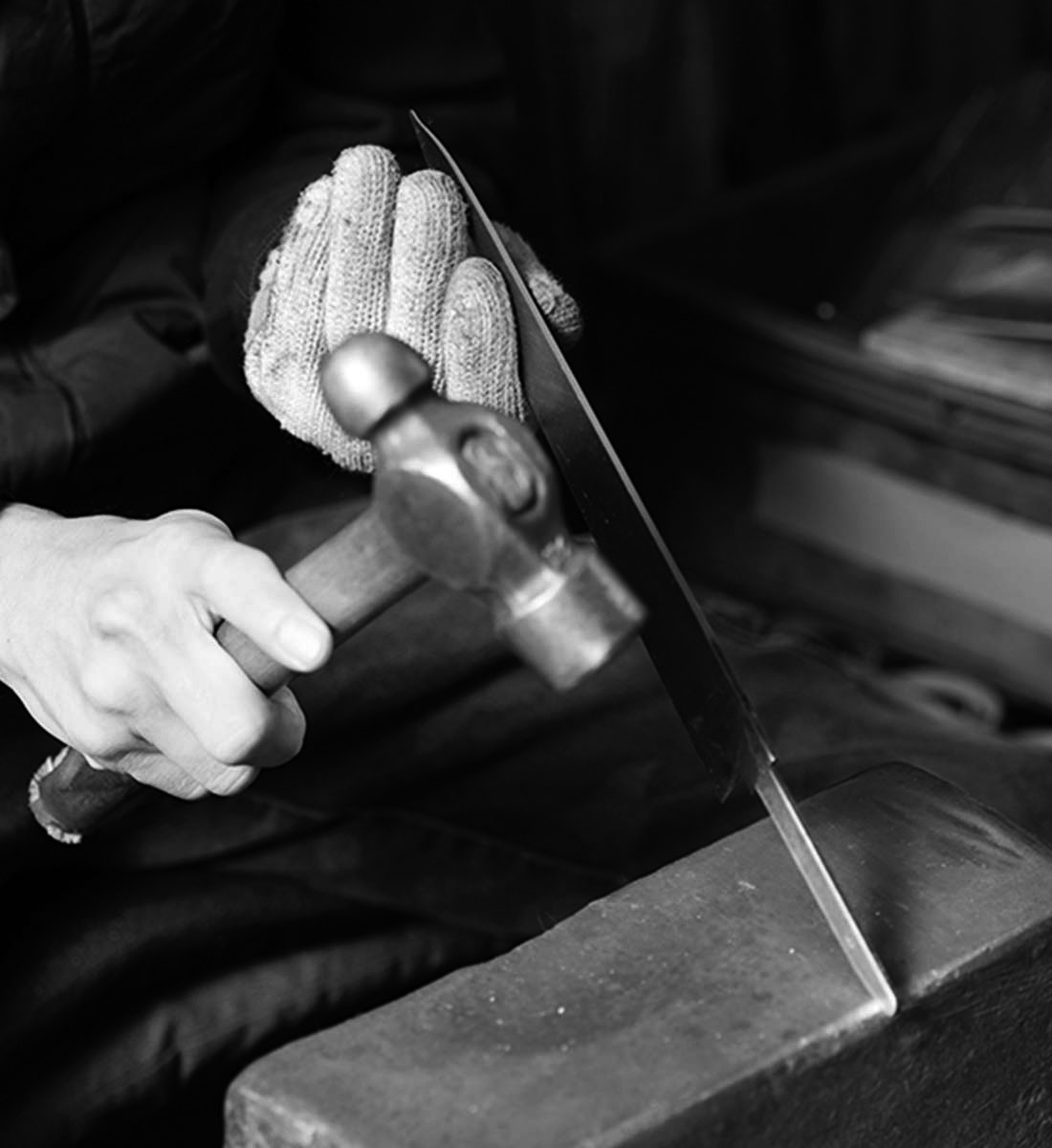Blades’ History
About 800years ago, master swordsmith "Motoshige" from Kyushu discovered suitable blade clay, pure water, and charcoal in Seki-town.
He found truly suitable climate condition for sword forging is here, Seki-town.
Since then, he moved to this area and devoted himself to making Japanese swords.
He is the first person who made Japanese swords in Seki-town.
Many swordsmith moved to Seki-town, following Motoshige.
In Muromachi period, Seki-town had over 300 Japanese swords master craftsmen and became famous Japanese sword production area where can manufacture a lot.
"Not to break, not to bend, and cut sharply" means the swords have ultimate sharpness, long-term sharpness, and toughness. Reputation of Japanese swords in Seki was spread in all over Japan, and Seki-town became best known as production area manufacturing well-known swords, and prospered.
Today the technique to manufacture Japanese swords is applied to manufacturing cutlery in Seki-town with the spirit of master craftsmen.
Seki cutlery craftsmen worship those Japanese swords master craftsmen.


Chef’ s Knife is ....
Since ancient times, it is transmitted in Japan what a symbol of emperor is Sanshu no jingi (the three sacred treasures).
Sanshu no jingi is Japanese traditional mirror, magatama, and sword.
Hence, knives are treated as a good luck symbol since ancient times.
Nowadays, knives are used in the place of the cake cutting ceremony on a Japanese wedding, tape-cut ceremony and so on as paving the way for future of a lot of happiness.
Chef's knives are very much familiar with Japanese people as gifts to ward off evil and to wish for good fortune.
